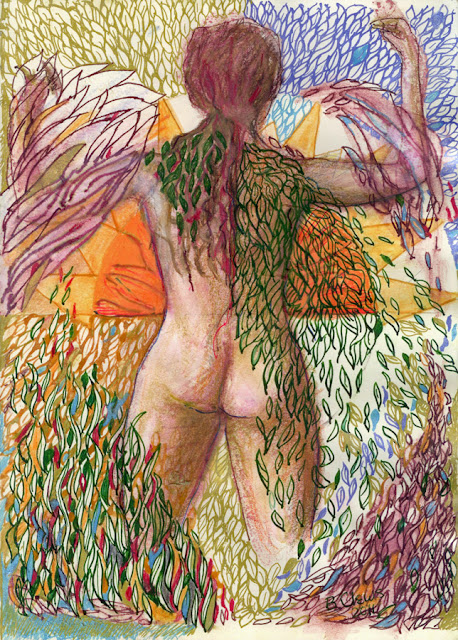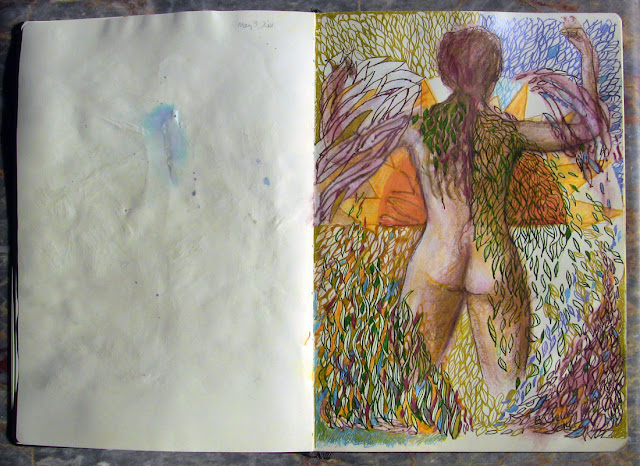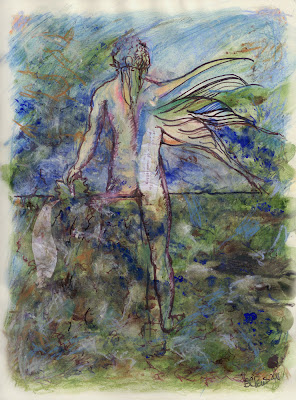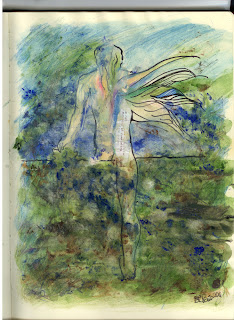




Last Tango in Paris (1972), re-watched 30 years later, contains a disturbing aspect. Researching the film, I discover the two main actors, Maria Schneider and Marlon Brando, both felt, in Bertolucci's final film after editing, raped by the director---even though this film was probably the 'performance of their life' for both actors.
Watching Breillat's, Sex is Comedy, in which a director elicits a moving sex scene between an actress and an actor who hate each other in real life, and Breillat is perhaps notorious for not using stand-ins, dummies, tape, but filming actual sex in her films, opened these questions for me. In Sex is Comedy the film becomes an obsession of the sex scene which, when it is finally filmed, is unforgettable, the camera held steadily on Roxane Mesquida, and we see her vulnerability, anger, shame, pain and defiance in her success as an actress as 'the act' is performed. Though it occurs under the sheets, and we see no nudity, we are watching a real scene; this is not make-believe.
None of Breillat's actors or actresses have turned against the performances they achieved under her brilliant eye as far as I know, but seeing the breakthrough of life in a scene, a moment clearly not acted, made me aware of moments in other films where I've seen actors cross the line from acting to revealing themselves on screen.
It is an intimacy that can be shocking to the performer. There is no gloss, nothing to hide under. Naked and revealed. As Maria Scheider was in the infamous 'soap scene' in Last Tango, of which she later said she had no idea was about to happen, there was nothing in the script, nothing was explained to her, and when it happened, and it was, of course, simulated, her response was real. She carried her anger over that scene all her life, apparently.
I remember it as a memorable scene, sudden, with a threatened violence, it was a moment when we left cinema, sitting in our seats in the dark, and witnessed a kind of rape of a 20 year old woman, albiet one who was willingly having an anonymous affair with the mad, grief-stricken character Brando plays.
Why it contained the hue of reality is because Schneider wasn't acting in that moment.
Is that what frightened and infuriated her later on? The jokes about that performance afterwards too close for comfort?
When actors who give superlative performances turn against their directors, the film they have starred in---is it because there are moments when they weren't acting in the performances elicited from them?
Does it disturb an actor not to act?
After Basquiat (1996), directed by Julian Schnabel:
...was released, the actor Jeffrey Wright said that "I think my performance was appropriated, literally, and the way I was edited was appropriated in the same way his [Basquiat's] story has been appropriated and that he was appropriated when he was alive. [...] Julian made him out to be too docile and too much of a victim and too passive and not as dangerous as he really was. It's about containing Basquiat. It's about aggrandizing himself through Basquiat's memory. en.wikipedia.org/wiki/Basquiat
Yet Schnabel's film opened Basquiat to me. Jeffrey Wright's performance, superlative. I fell in love not with Schnabel, but Basquiat. How can this be appropriation? Schnabel includes himself in Basquiat's story. It is his lived experience, his truth. How could it be otherwise?
When I saw Jean-Michel Basquiat: The Radiant Child, a documentary by Basquiat's friend, Tamra Davis, with real footage of the artist, and his actual art, my love deepened (the Basquiat family declined to allow Schnabel to use Basquiat's real work in his film and so he had to create facsimiles, which certainly decreased the power of the film).
Others.
Burt Reynolds in Boogie Nights (1997), starred as a porn director named Jack Horner, for which he received an Oscar nomination. Reynold's sacked his agent, divorced himself from the film, said no to a sequel.
Not talking about actors responses to bad movies they've been in, of which every actor has a story.
Talking about actors denigrating films in which they gave realistic performances that are recognized as great performances.











